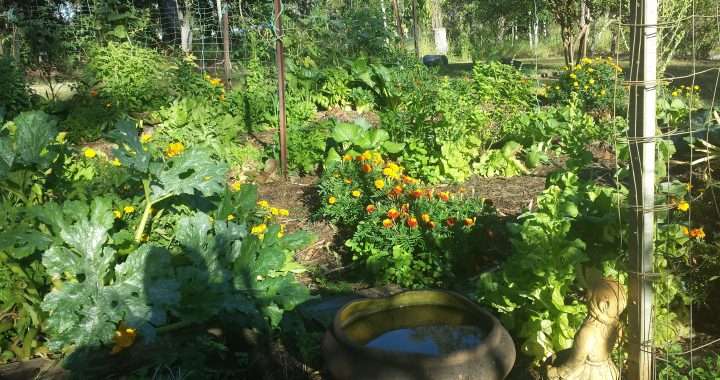
Vegetable garden water saving tips
Author : My Food Garden
Vegetable garden water saving is critical at dry times of the year. Its so easy to waste water but with a number consistent practices explained below, you can greatly reduce the amount of water used and increase its effectiveness.
Your starting point
Vegetable garden water saving begins in your garden design. Here are my tips:
-
Your beds are raised slightly above your garden paths, as raised beds hold more water
-
The beds must be flat on top and if you are in a particularly dry climate, slope the beds into the middle
-
If your garden is on a slope, cut your bed into the contour of the slope so that watering from the top beds seeps down to the lower beds.
-
Carefully consider overland water flow when locating your garden bed as you need water to slow down and soak into your patch, but you also need to ensure that where there is excess water it can flow away easily
-
Use dripper or small spray rose irrigation around the garden beds rather than over-head watering.
-
Examine your soil profile – If it is more sandy, you will struggle to hold water until you add powdered clay and increase organic matter in the soil. If the soil tends to be more clay, water will run off or pond, so adding sand and progressively building organic matter will help. If you bring in “organic soil” from a nursery, always assume its water holding capacity will be poor and follow the ongoing tips below.
Ongoing tips
Consistent practice with these vegetable garden water saving tips will yield great results:
-
Consider the rain – Avoid watering when its raining regularly. This may sound obvious but if you had an automated dripper system, it needs to be deactivated when it rains at least every second day.
-
Increase the humus levels in your soil – Good humus levels increase the water retention capacity of your soil. Humus can hold up to 6 times more water than dry sand, loam or clay soil. The best way to increase humus levels is to: (a) add quality compost to your soil, (b) include green manure crops in your rotation to add organic matter, (c) add biological ferments to the soil, and (d) potentise all organic processes with regular application of biodynamic soil preparations
- Remineralising soil – Adding rock dust will help water retention and provide minerals for the living humus building process. Bringing the soil ph to neutral 6-7, will aid the living process and this can initially be quickened with lime (ph up) or sulphur (ph down).
-
Add mulch to retain moisture – This holds in moisture and reduces water loss from evaporation. Do not make your mulch layer too thick as this will promote mould
-
Train plants to use less water– By watering less frequently, but more quantity when you water, you will use less water and help the plants roots to go deeper for moisture. Constant watering encourages roots to stay shallow and makes the plants more subject to wilting from changes in surface level moisture.
-
Water the roots only – Only water the base of the plant, not the leaves. This maximises available water to the root area and minimises potential for mould on leaves
-
Water at the right time – Only water in the late afternoon when the temperature has cooled or in the early morning. Do not water in the middle of the day.
-
Some high tech solutions – Plants always get more benefit from rainwater. Its energised as it falls from the sky. You can get special water restructuring devices that have a similar affect and energise water. Have a look at AHA devices.
-
Use the best quality water you can get – The fresher and cleaner the water you use, the more likely the plants will respond positively, i.e. they get more value out of the water, so you can use less water overall. If you use chlorinated city water, leave water in a barrel before using so the chemicals can evaporate from the water.
-
Grow low water usage plants– If you have very little water only grow plants that can thrive with low water usage.
All these tips are weaved into our Workshops or talk to us about our Coaching service.

